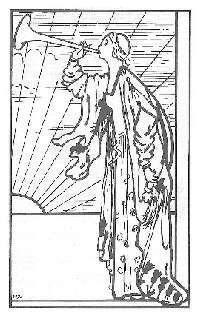Introduction
We have split the materials up into three periods – and provided links to supporting articles.
Early days – girls clubs
Brooke – The Honor Club. In this short article taken from Girls Clubs News (June 1912) Evelyn Brooke reports on her work in the Honor Club.
Emmeline Pethick (1899) – Working girls’ clubs. Emmeline Pethick reflects on some early and highly innovative work with girls and young women.
Maude Stanley – the way to start and run a girls’ clubs: Maude Stanley’s (1890) handbook Clubs for Working Girls was the first substantial exploration of what was involved in girls’ club work. Here we reproduce Chapter II. In it Stanley sets out her view of some of the key characteristics of such work. See, also: Maude Stanley and the making of girls clubs.
Maude Stanley – ‘night schools’: This piece provides an insight into the way in which parish visitors approached their tasks – in particular, how they related schooling and club work to outreach. Taken from Chapter IX of Maude Stanley’s (1878) Work About The Five Dials, London: Macmillan.
The girls and mixed clubs period
Josephine Macalister Brew and others – Why clubs at all? In this (1943) piece Josephine Macalister Brew and others explore the rationale for club work. Clubs are viewed as societies of growing persons and as places where people can learn to play their part in communities. There is strong plea for a concern with the spirit and of leaders understanding their role as that of guide, philosopher and friend.
See, also: Josephine Macalister Brew and informal education.
The youth club period
Joan Matthews – Professional Skill. An important statement of the role of supervision and social groupwork.
Fred Milson – Growing with the Job: In this popular pamphlet from 1968, Fred Milson makes the case for attending to the growth and development of workers. See, also: Fred Milson: developing the practice of youth and community work
Fred Milson – Why am I a Youth Worker? Fred Milson (1972) argues that youth workers properly have several goals and motives, and that a hierarchy of purposes appears. The motive and goal that should be given first priority is for individual personality development – but this has to be fulfilled in social relationships and community involvement.
Girls in the Nineteen Sixties – Mary Robinson. This landmark booklet, first published in 1963, set out why youth workers should focus more strongly on the specific needs of young women.
Alan Rogers – Starting out in detached work. A classic pamphlet exploring the experience of detached youth work.
Lesley Sewell – Looking at youth clubs. E. Lesley Sewell’s (1966) pamphlet is a youth work classic, the reference point for many when thinking about the work they were observing. See, also, Lesley Sewell and youth work
Mark Smith – Creators not consumers. Rediscovering social education: The full text of the 1982 edition. Produced as part of the NAYC Political Education Project (funded by the Department of Education and Science).
Mark Smith – Organise! A guide to practical politics for youth groups and community groups [1981 – some occasional fuzziness in the text]. Produced as part of the NAYC Political Education Project (funded by the Department of Education and Science).

